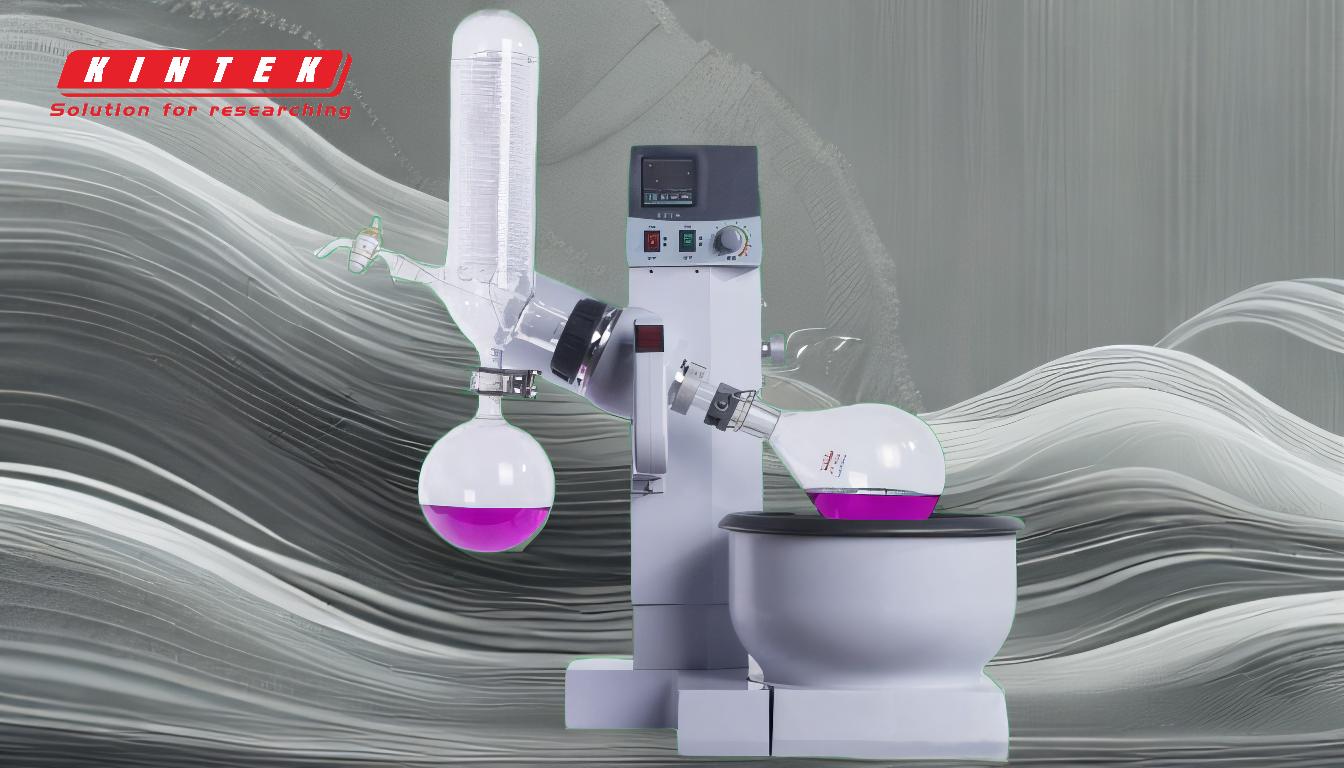The water bath temperature for a rotary evaporator depends on the solvent being evaporated and the desired outcome. Generally, the temperature should be set below the boiling point of the solvent to prevent thermal decomposition and ensure efficient evaporation. For common solvents, a temperature range of 30-40°C is often recommended. However, the exact temperature should be adjusted based on the solvent's properties and the specific requirements of the experiment. Lower temperatures are preferred for heat-sensitive compounds, while higher temperatures may be used for solvents with higher boiling points. Always ensure the water bath temperature is within the safe operating range of the equipment.
Key Points Explained:

-
Temperature Range for Common Solvents:
- For most solvents, the water bath temperature should be set between 30-40°C. This range is ideal for preventing thermal decomposition and ensuring efficient evaporation.
- Example: Ethanol, a common solvent, typically requires a water bath temperature around 30-40°C.
-
Boiling Point Consideration:
- The water bath temperature should not exceed the boiling point of the solvent. Exceeding this temperature can lead to rapid boiling, which may cause loss of sample or damage to the equipment.
- Example: If the solvent has a boiling point of 60°C, the water bath should be set slightly below this temperature, around 55°C, to ensure controlled evaporation.
-
Heat-Sensitive Compounds:
- For heat-sensitive compounds, lower water bath temperatures are recommended to prevent degradation. This is particularly important in pharmaceutical and biochemical applications where the integrity of the compound is crucial.
- Example: A temperature of 25-30°C might be used for delicate compounds to minimize the risk of thermal degradation.
-
Equipment Specifications:
- The water bath should have a temperature control range that matches the requirements of the solvents and compounds being used. Most digital water baths offer precise temperature control, often in increments of 0.1°C.
- Example: A digital water bath with a range from ambient temperature to 99°C, with PID temperature control, is suitable for a wide variety of solvents.
-
Operational Steps:
- When setting up the rotary evaporator, ensure the water bath is filled with the appropriate amount of water and set to the desired temperature before starting the evaporation process.
- Example: Fill the water bath with pure water or let tap water sit for a day to dechlorinate, then set the temperature to the required level.
-
Safety and Efficiency:
- Always monitor the water bath temperature during operation to ensure it remains within the safe range. Adjustments may be necessary based on the progress of the evaporation and the behavior of the solvent.
- Example: If the solvent begins to boil too vigorously, reduce the water bath temperature slightly to maintain control over the evaporation process.
-
Post-Evaporation Procedures:
- After evaporation, ensure the water bath is turned off and the equipment is properly cleaned and stored to maintain its longevity and performance.
- Example: Once the evaporation is complete, raise the evaporating flask out of the water bath, turn off the vacuum source, and disconnect the cooling water before cleaning the apparatus.
By following these guidelines, you can ensure safe and efficient operation of the rotary evaporator, achieving optimal results for your specific application.
Summary Table:
| Key Factor | Details |
|---|---|
| Common Solvents | 30-40°C for efficient evaporation and prevention of thermal decomposition. |
| Boiling Point Consideration | Set below the solvent's boiling point to avoid rapid boiling. |
| Heat-Sensitive Compounds | Use lower temperatures (25-30°C) to prevent degradation. |
| Equipment Specifications | Digital water baths with precise control (0.1°C increments) recommended. |
| Operational Steps | Fill water bath, set temperature, and monitor during evaporation. |
| Safety and Efficiency | Adjust temperature as needed to maintain controlled evaporation. |
| Post-Evaporation Procedures | Turn off water bath, clean, and store equipment properly. |
Need help setting up your rotary evaporator? Contact our experts today for personalized guidance!










